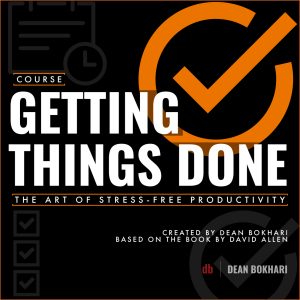3: Define What “Done” Looks Like
- Welcome to Lesson 3!
- 🎧 Press Play to start this lesson.
- 📖 Scroll down or open your workbook to follow along.
Lesson summary
“Having a clear action outline prevents procrastination due to imagined complexity.” —David Allen, Getting Things Done
Most of the tasks people keep on their to-do lists are undoable.
In other words, they’re a bunch of commitments with no clear vision of what being “done” actually looks like.
That’s a huge problem.
Your brain is naturally designed to help you figure out how to do things, but only if you know what the endpoint looks like.
For example, there’s a BIG difference between creating a list of tasks that looks like this…
- ❌ Groceries
- ❌ Study
- ❌ Emails
- ❌ Article
Versus creating a list of tasks that looks like this…
- ☑️ Get groceries @Trader Joe’s this afternoon (see usual grocery list)
- ☑️ Study for Algebra test @library from 6pm-7:30pm
- ☑️ Respond to all work emails in Priority inbox
- ☑️ Write at least 500 words for new productivity article
The first list includes a bunch of things, but nothing more. No action-words. No specificity.
Sure, seeing the word “study” might trigger your mind to study… But for how long? Where? When? And for what?
The second list includes a clear, specific, and actionable set of tasks.
You know exactly what needs to happen. You know when you’ll be doing it. And you know exactly what “done” looks like.
Everything you’re working on should have a very clear stopping point – a point where you know you’re done.
If you don’t know what that point looks like, you’ll find it very difficult to make any progress at all.
Actionable insights
- When you’re having trouble making progress on your tasks, first clarify what being “done” looks like. The simplest way to do that is to ask yourself, “How will I know when I’m DONE?”
- The most useful way to get clear about what “done” looks like is to include clear outcomes on your lists:
- write 500 words,
- study for 90 minutes,
- complete 5 slides for the new presentation
- Another useful strategy is to incorporate action-words into your lists:
- handle emails,
- drive to the store,
- call so and so.
Exercise
💡 Find this exercise in your Part 1 Workbook
- Now it’s your turn. Create a list of 3-5 desired outcomes you’d like to get done this week.

